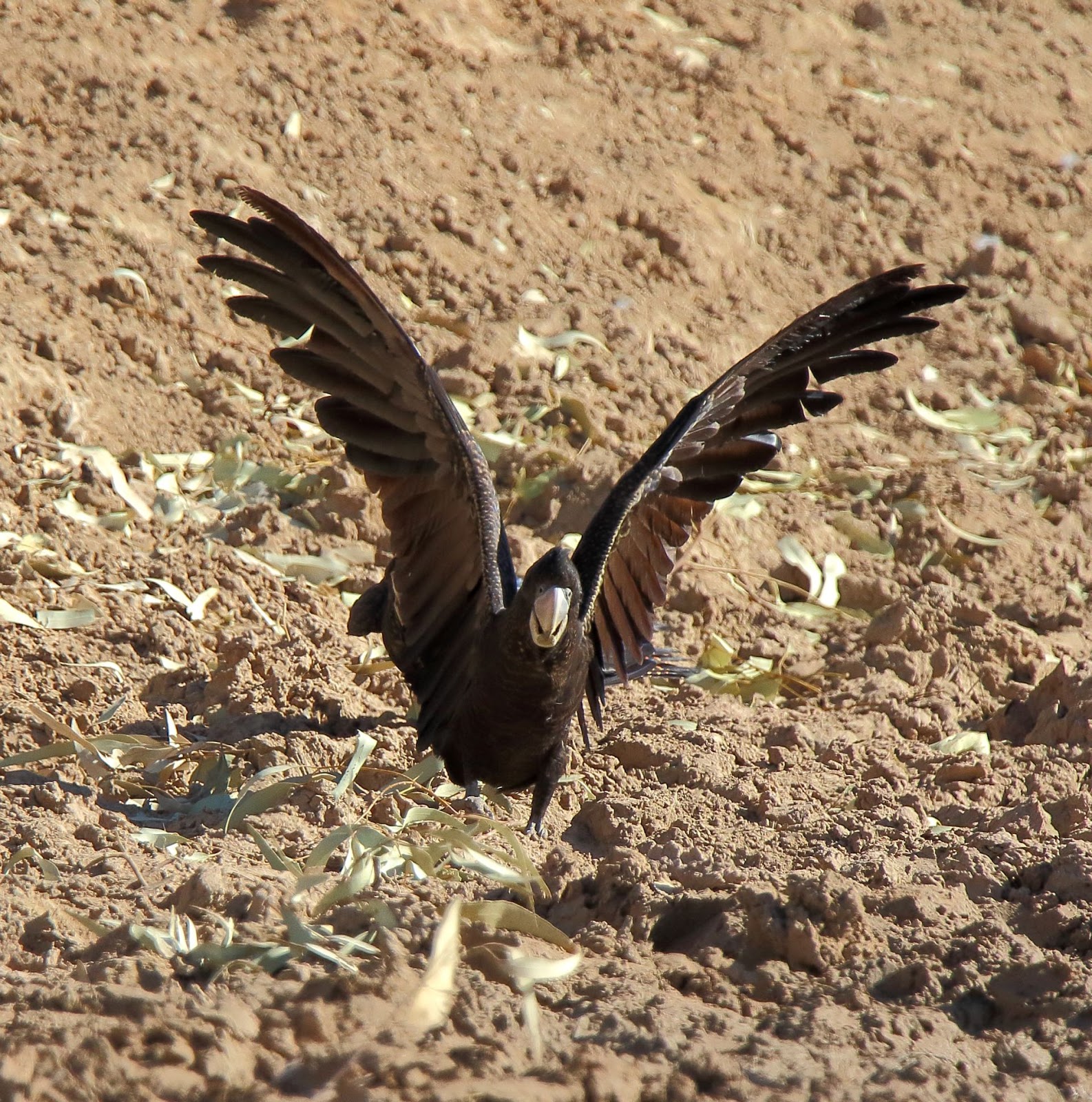


The Glossy Black Cockatoo, on the other hand, is more inclined to inhabit woodlands and forests because it's a dietary specialist, feeding exclusively on the seeds of she-oaks (principally Allocasuarina). Along with the Cockatiel, Galahs are nomadic, open country specialists that feed on grass seeds and move in flocks over large areas to wherever food is plentiful. Of the Australian species, Galahs are the most widespread, occurring over most of the country. Where do cockatoos live?Īs well as Australia, cockatoos can be found in Papua New Guinea, Indonesia, the Solomon Islands and the Philippines. They’ll also make use of their bill as a third limb when climbing.
#Black red tailed cockatoo Patch#
The large red patch on the Palm Cockatoo is the most obvious.Ĭockatoos share many characteristics in common with other parrots, including their curved beaks and gripping zygodactyl feet (two middle toes pointing forward and the other two backward). Several species have brightly coloured areas around their eyes and face called periophthalmic rings. Palm Cockatoo* ( Probosciger aterrimus), Pink Cockatoo (also known as Major Mitchell’s Cockatoo – Cacatua leadbeateri), Galah ( Cacatua roseicapilla), Gang Gang Cockatoo ( Callocephalon fimbriatum) and Cockatiel ( Nymphicus hollandicus).Ĭockatoos are mainly white, grey or black with spot colouring in the crests, cheeks or tails. Black cockatoosĬarnaby’s Black Cockatoo or Short-billed Black Cockatoo ( Calyptorhynchus latirostris), Baudin's Black Cockatoo or Long-billed Black Cockatoo ( Calyptorhynchus baudinii), Yellow-tailed Black Cockatoo ( Calyptorhynchus funereus), Red-tailed Black Cockatoo ( Calyptorhynchus banksii) and Glossy Black Cockatoo ( Calyptorhynchus lathami). Sulphur-crested Cockatoo ( Cacatua galerita), Little Corella ( Cacatua sanguinea), Long-billed Corella ( Cacatua tenuirostris) and Western Corella ( Cacatua pastinator). Red-tails will most often roost in clumps of tall eucalypts, such as young Red Gums, and may use the same site for many months.Australia is home to 14 cockatoo species, of which 11 exist in the wild only in Australia. Large flocks often form in areas carrying exceptionally high seed crops or where food is concentrated in just a few patches. Sites where some of our largest flocks of Red-tails have been recorded include Rennick State Forest (360), Boilaar Swamp in Roseneath State Forest (372), Pieracle Swamp south-west of Casterton (~500) and Dunrobin (460). In autumn and winter, flocks of 100 to 250 birds can be seen in areas with a good food supply. Through Spring and early summer, the breeding season, Red-tailed Black-Cockatoos are generally seen alone or as family parties of 2 to 3 birds. If you interested in seeing birds please contact the project coordinator who can direct you to the most recent places or sites that the birds have been seen. Although Red-tails are widespread across the range, some of the more likely areas or hotspots for finding birds are around Edenhope, Casterton, Naracoorte, Frances, Nelson (Lower Glenelg National Park) and Lucindale. They are highly nomadic, moving throughout their range in response to food availability. Red-tails rely on stringybark, buloke and gum woodland habitats and scattered trees throughout the range for feeding and nesting. Their total range covers an area 18,000km 2 from Nelson to Little Desert National Park in South West Victoria and from Keith to Mount Gambier in the South East of South Australia (see range map below). The south-eastern Red-tailed Black-Cockatoo only occurs in the south-east of South Australia and south-west Victoria. Range of the South-eastern Red-tailed Black-Cockatoo Juveniles are difficult to distinguish from adult females from the age of 1 to 3 years. Females have an off-white bill which one volunteer suggests looks like the birds are carrying golf balls! Males have a grey bill. Their tail barring can be almost all pale yellow or pale yellow grading to pale orange-yellow at the tip. Viewed from below, their body is barred in pale orange-yellow. They have duller brown-black plumage but the feathers of their head, neck and parts of their wing are speckled with yellow. Females are quite different but equally spectacular – they are one of the most brightly marked subspecies of Red-Tail. Male Red-tails have glossy black plumage with stunning, bright red tail panels.


 0 kommentar(er)
0 kommentar(er)
